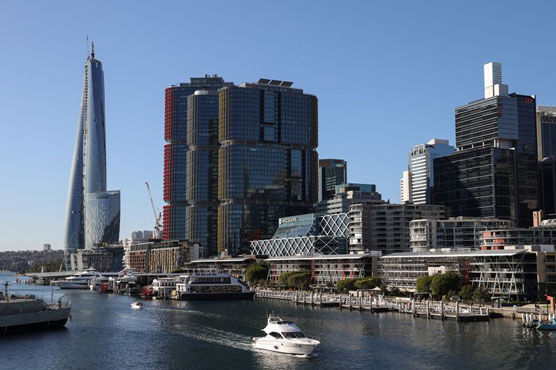Australia's second quarter GDP shrinks at record pace as coronavirus pushes country into recession

This is the largest fall in quarterly gross domestic product (GDP) since records began in 1959
SYDNEY (Reuters) - Australia suffered its worst economic downturn on record last quarter as it battled the coronavirus crisis, while fresh outbreaks threaten to upend an already bumpy road to recovery and pile pressure on the government to keep fiscal taps open.
Data from the Australian Bureau of Statistics on Wednesday showed the country’s A$2 trillion (1.10 trillion pounds) economy shrank 7% in the three months to end-June from a 0.3% decline in the March quarter.
This is the largest fall in quarterly gross domestic product (GDP) since records began in 1959. GDP declined by 6.3% from a year ago.
The contraction, which was deeper than median forecasts of 5.9%, comes as Australia’s second most-populous state of Victoria remains in a lockdown to curb the spread of the coronavirus while international borders are shut too.
More than a million people have lost their jobs since March when Australia shut down entire sectors of the economy, hitting private sector demand and investments.
The government did step up, splashing record amounts of cash to support jobs and incomes, though Wednesday’s gloomy data underlines the need for more stimulus as the recovery is expected to be uneven and bumpy.
“Looking ahead, it is clear that the path back from the COVID-19 recession will be protracted,” said Sarah Hunter, chief economist for BIS Oxford Economics.
“Growth in the September quarter will be weighed down by the lockdown in Victoria, and beyond this continued health concerns, ongoing restrictions and the dialling back of income support will all weigh on the economy,” Hunter added.
“We expect it to take until early 2022 for activity to return to pre-pandemic levels.”
On its part, the Reserve Bank of Australia (RBA) slashed interest rates to a record 0.25% in an emergency meeting in March and on Tuesday expanded its cheap funding facility for the country’s lenders to keep low-cost credit flowing in the economy.
It has promised to provide additional support if needed.


